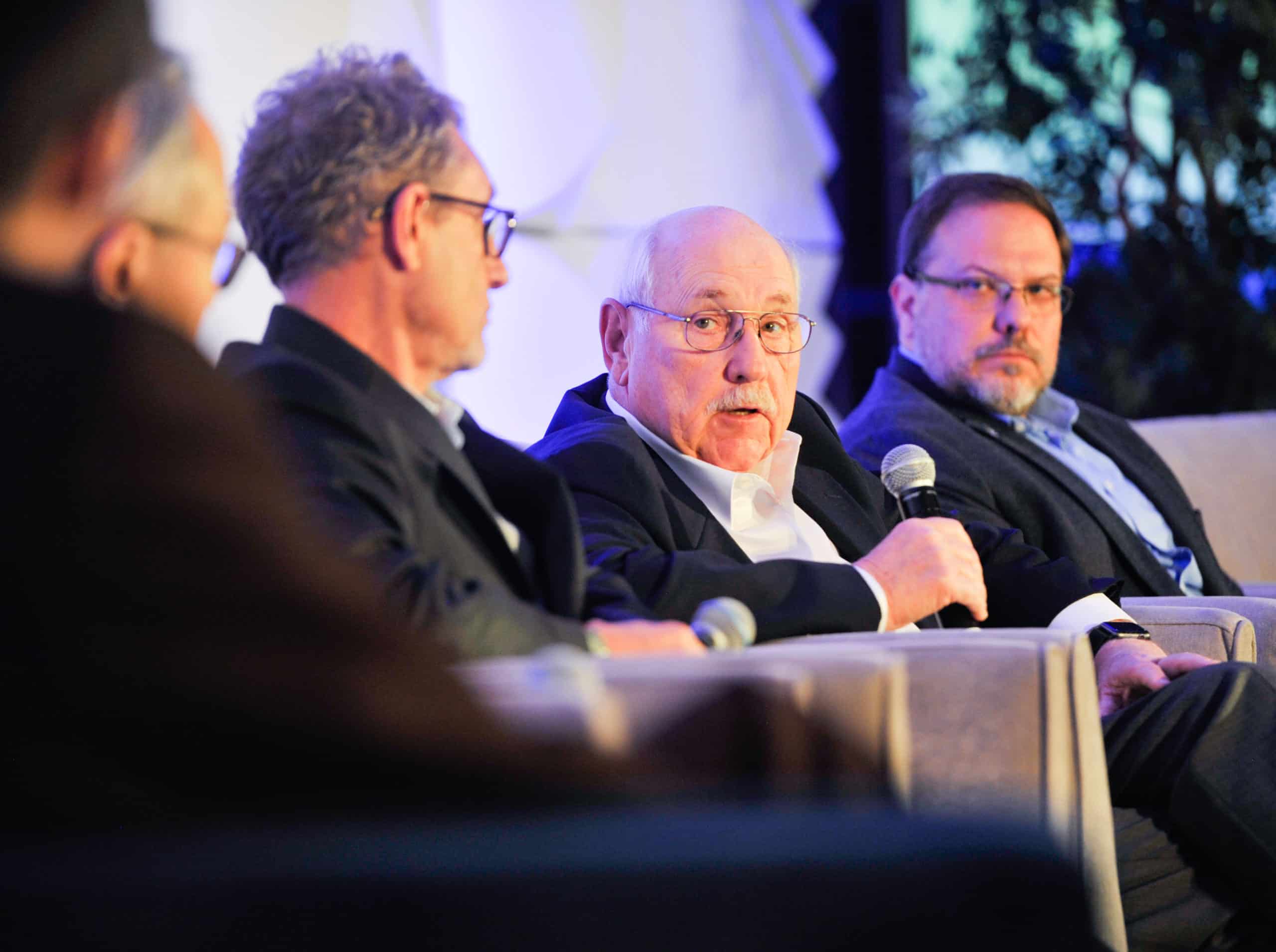A look back: Overheard at Cargo Facts Symposium 2022
At last year’s Cargo Facts Symposium 2022 in San Diego, industry leaders provided insight into a freighter market that has changed profoundly since the pandemic, with more than 400 executives gathering to learn about the latest developments.
Among the highlights from the Symposium were new information on trends in freight market fluctuation, intelligence about the conversion market and sustainability practices. What follows are some additional highlights of what was overhead at the conference.
SkyCourier nears entry into service
The regional freighter segment has come into its own in the last year as more models have been announced to tap into the thriving market. Meanwhile, markets for medium-narrowbody aircraft like the 737 may be reaching a bubble.
And demand for regional freighters is not limited to developing regions; new conversions for the ATR 72-600 and Dash 8 will soon enter the market, and a brand-new production freighter with the ability to carry containers received its type certification earlier this year.

Tim Komberec, president and CEO of Empire Airlines. (Photo/Cargo Facts)
“I’m more excited about the Cessna SkyCourier than I’ve been about any other airplane coming into the feeder system in the last several years,” Empire Airlines President and CEO Tim Komberec said at the Symposium.
“We’ve had phenomenal success running Cessna Caravans and that is a great platform, but now along comes an airplane that can basically replace two of those on a route. It’s capable of carrying three containers and has probably the best turboprop engine built. It has fixed gear and a beautiful, advanced cockpit.”
In July, Empire took delivery of the first unit it will fly on a CMI basis for FedEx Express and ferried it to Spokane (GEG). The aircraft promises to be a “phenomenal” addition to the FedEx system, Komberec said.
“We’re working to get the first one on our certificate and we’ve got a couple more coming in the next few weeks,” he said. “I can’t wait to get them in revenue service in February and I think it’s going to transform that segment of the FedEx feeder operation.
“It won’t replace the Caravans everywhere, but one SkyCourier is capable of going on routes where we’re flying two or three Caravans now. It’s also capable of replacing some of our smaller ATR 42s that are running on routes where we can’t use the full capacity.”
A330 conversions continue to gain ground
At the opposite end of the market there is growing demand for the A330P2F medium-widebody freighter type, which several industry leaders touted at the Symposium.
Elbe Flugzeugwerke (EFW) has now secured more than 100 conversion orders for its A330P2F program and is already selling slots for 2027.
CDB Aviation, a relative newcomer to the freighter market, took redelivery of its first two A330-300P2Fs earlier this year.
“We decided to convert fourteen A330-300P2Fs from our fleet and we have placed about half of those out so far, stretching out to 2024,” Head of Strategy Cronan Enright revealed at the Symposium. “We’ve been very pleased with the entire freighter program, and it is a great diversification play in our portfolio. It’s been very successful so far and we’re seeing strong demand.”
CDB is seeing the strongest potential from the Americas and China, with an emphasis on trans-Pacific route connectivity. “China is an interesting market because the 767 is actually not a main player there,” Enright said. “This is a growth market rather than a replacement market.”
CDB leased its first two conversions to Mexico-based Mas. CEO Luis Sierra said at the Symposium that the carrier is unlikely to receive any more freighters in the first half of 2023 due to conversion delays but expects to continue growing with both A330P2Fs and 767Fs.
“We feel comfortable with both those types,” Sierra said. “With the range of the A330 we can fly to Europe, and with the 767 I think it is perfect for missions in the Americas.”
Freighter leasing remains strong
Lessors at the Symposium agreed that the appetite to lease freighter aircraft is currently robust.
“The demand is remaining very strong,” Altavair CEO Steve Rimmer said. “We’ve got to remember that we’re going to revert to a trend line, but I don’t think we’re going to go backward.”
The market is shifting significantly and creating new customer segments, John Lynch, senior vice president and head of freighter programs at BBAM, added. BBAM is one of the largest customers for both 737-800BCF and A321-200P2F conversions.
“What we have to think about here is we’re in a new era,” Lynch said. “I think we’re in a fourth industrial revolution and it’s changing the whole dynamic of these aircraft. We think it’s a good place to be and we’re very happy with our place in this segment. There’s a whole new set of customers and we’re providing a whole new set of tools.”
BBAM is seeing sales going out to 2023 and beyond with its narrowbody freighters, Lynch said, highlighting new customers such as Oman-based Salam Air, to which BBAM recently delivered an A321-200P2F. “This is a passenger airline that is developing a freighter business and they’re very excited about the airplane,” he said. “We’re very happy to work with Salam Air. Another example is Lufthansa. We helped them create a new standard-body freighter fleet.”
As Cargo Facts has previously reported, multiple lessors have entered the freighter market for the first time, very often with the 737-800F and A321-200F platforms. Rich Greener, head of cargo at AerCap, said he expects more to follow, although some will also exit the market.
“It’s not easy being in this sector, but if they see success with air cargo then of course they’ll diversify,” Greener said. “One thing that we’re seeing as well is there’s a tremendous surge in the passenger market and delays in production. That’s going to put more demand on mid-life passenger aircraft so some lessors may want to come in but be dissuaded because of the pax market.”
Liquidity in the freighter market
The availability of liquidity in the last decade has allowed some lessors to make decisions that “fundamentally don’t stack up,” Altavair’s Rimmer noted.
“A lot of lessors build their business on the ability to aggregate a portfolio of assets and flip them into the capital markets with asset-backed securities,” he said. “When we look at the lessor community, we look at how they’re financed. Today there is a huge amount of liquidity that needs to be paid to the banks with no visible way of churning out those commitments.”
BBAM’s Lynch, meanwhile, agreed that some lessors may have turned to freighters as a defensive move, and said that BBAM is building up a long-term platform for the next twenty-five to thirty years.
“You really have to have a very strong team with diverse skills and experience to convert an airplane — it’s not for everybody,” he said. “There are easier ways to make money. I think we’ll see some come in and go out again. There are significant barriers to entry with this segment, which I think will keep it relatively small.”
Will we see a narrowbody bubble?
As orders and redeliveries for the latest generation of narrowbody conversions continue, one major topic of discussion at the Symposium was the oversupply of conversion capacity.
Aeronautical Engineers Inc. (AEI), for one, is cautious about adding any more conversion sites, Bob Convey, senior vice president of sales and marketing, said at the event.

The conversion panel at CFS 2022. (Photo/Cargo Facts)
“We’re going to get back to a slowdown,” Convey said. “We have twelve lines for 737-800s and seven lines for legacy products — and at the moment there’s demand for it — but I’m fooling myself if I think those twelve -800 lines are going to continue forever.
“The rate at which conversion centers are producing aircraft, especially in the narrowbody sector, is very high right now. That’s not sustainable,” he said.
A downturn may not support all the conversion programs that currently exist or are in development for the 737NG and the A320 Family, Convey added.
“On the narrowbody side, I think there are going to be two primary aircraft, the 737-800, which is a great freighter, and the A321, which is the 757 replacement,” he said. “Those two will dominate in terms of the numbers. The 737-700 and the A320 are smaller-volume aircraft and the A320 is closer to the 737-400 size than the -800.”
EFW, the first provider to have both an A321F and an A320F program certified, is confident in the potential of the smallest member of its family of Airbus conversions.
“I see a great future for A320Fs,” Senior Vice President of Sales and Marketing Wolfgang Schmid told the audience. “For example, in markets like India and South America, where the A321F might be too big, there are many operators with passenger A320s, and we see clear advantages of the A320 over the 737-800.”
Meanwhile, C Cubed Aerospace is joining EFW to develop an A320 freighter conversion and expects to obtain certification for its supplemental type certificate (STC) in the first quarter of 2023, CEO Mike McConnell said.
“We work very hard to keep to the schedule and there’s tremendous demand with customers wanting to get to the point where we can start delivering,” McConnell said. “We feel comfortable with where we are today and what we’ve accomplished. Demand is right where we expected it to be.”
This feature was originally published in the November 2022 issue of Cargo Facts.
Learn more about Cargo Facts Symposium 2023 and register today to take advantage of our early-bird sale.





